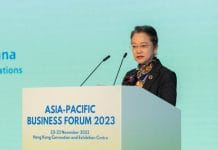KPMG’s global survey of CEOs in 2022 found that talent acquisition, retention and digital re/upskilling have leap-frogged to the top of business leaders’ operational concerns. As a result, CEOs have made the employee value proposition (EVP) to attract and retain the necessary talent as a top priority to achieving 3-year growth objectives.
Delivering an employee experience (EX) that attracts the talent you’re after doesn’t happen by accident – it takes a concerted effort across a range of people-related initiatives, key to which is a focus on your organization’s culture and capabilities.
While organizations are increasingly aware of this shift in expectations, they continue to rely on outdated philosophies that are no longer effective. As a result, they face continuous disruptions in business operations due to their inability to attract and retain good talents in this competitive labor market.
Creating a holistic, positive EX begins with building the right behavioral capabilities, which, in turn, will pave the way for fostering the right culture. As culture shapes how employees think, feel and act toward their organization, having the right behavioral capabilities is essential for influencing employees’ perception throughout their entire employment journey and day-to-day activities.
High-performing organizational cultures and capabilities focusing on EX are likely to see higher employee morale, commitment, productivity, and tenure as well as better physical and emotional well-being.
As such, employees with positive EX are more likely to adopt the organization’s values and beliefs and translate them into behaviors that are beneficial to the organization. Ultimately, the interplay of culture, capabilities and EX is crucial to determine and even accelerate your business outcomes.
Source: People and Change Advisory, KPMG Management & Risk Consulting
Achieving positive EX requires employers to understand and fulfill employees’ needs. Employees want to feel recognized and valued, with their purpose aligned to the organization’s mission. They are hungry for social cohesion and demand a culture of top-down and bottom-up communications. Employees desire clear responsibilities and to be equipped with future capabilities. Last but not least, they want remote working opportunities combined with genuine flexibility – essentially a culture of trust and accountability – in their pursuit to achieve the elusive work-life balance.
Establishing the right culture and capabilities calls for an assessment of four parameters in your organization:
- Leadership: The role top executives and senior leadership play in setting and communicating expectations and how strategy and direction influence culture in the workplace.
- Beliefs and values of organization: These drive an organization forward and define its identity. Having a shared sense of value across the organization encourages desired behaviors.
- Structure, processes and growth: To gain and maintain a competitive advantage and a good reputation, the organization is required to constantly revise its business operation, administration and strategy.
- Employee orientation: An organization that focuses on an employee-centric approach can promote employee development and engagement, as well as help to attract top talents.
Our observations from working with leading organizations across various industries show how business leaders tend to underestimate the effort that goes into creating the desired culture, which ultimately impacts worker productivity and results in a gap between business goals and actual outcomes.
KPMG’s survey involving 300 leaders in human resources (HR) reveal that leading organizations focus on building capabilities to move forward with momentum. It is how they continue to ensure a flow of talent to address the broader business needs, as well as provide an excellent, frictionless, working experience and career path for their people.
In this post-pandemic landscape, as employees go through a ‘Great Reconsideration’, there is little time for business leaders to sit back and hope that their people can deliver according to the organization’s strategy. Achieving business objectives will require an emphasis on creating the right culture and placing people at the heart of the organization.
By Sharmini Ann Jacob, Executive Director, People & Change Advisory, KPMG in Malaysia










